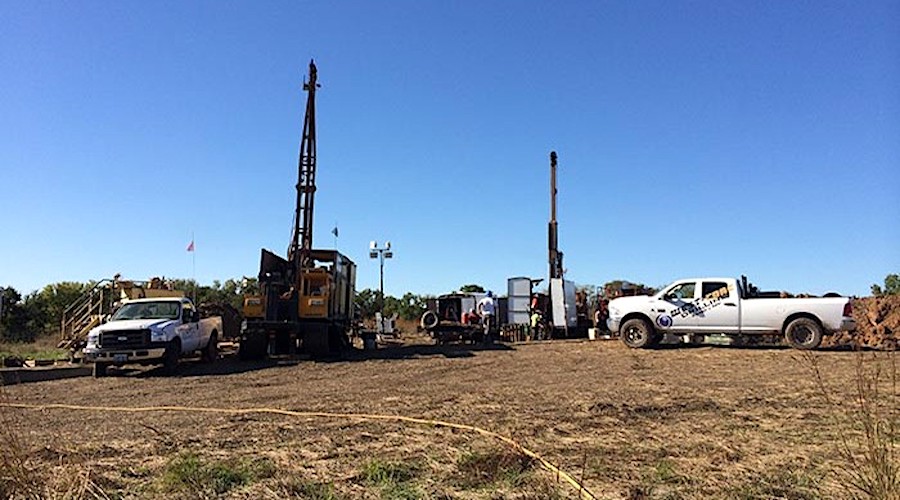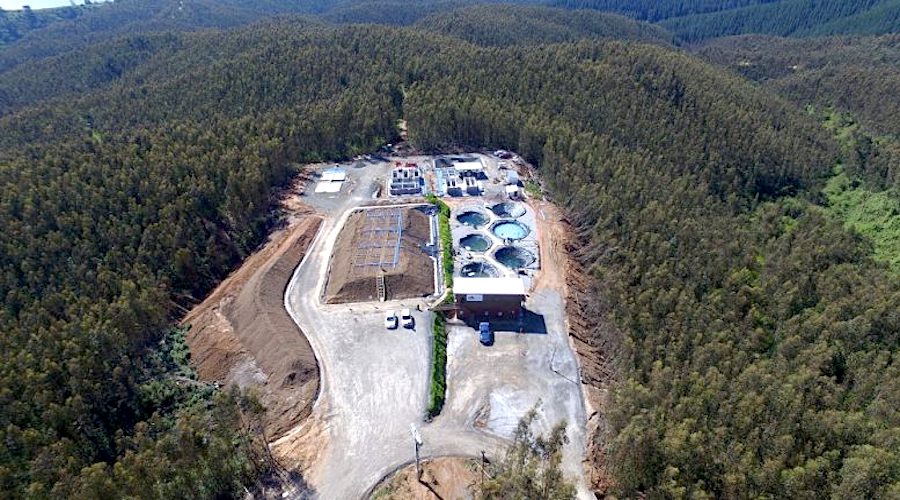Second-largest indicated-or-better rare earth resource in the US now identified
Staff Writer | May 22, 2022
 Drill rigs at Elk Creek niobium project in southeastern Nebraska. (Image courtesy of NioCorp Developments).
Drill rigs at Elk Creek niobium project in southeastern Nebraska. (Image courtesy of NioCorp Developments).
NioCorp Developments’ (TSX: NB) Elk Creek project in southeastern Nebraska can now be considered the second-largest indicated-or-better rare earth resource in the US, second only to MP Materials’ Mountain Pass rare earth deposit.
The finding follows an updated feasibility study in which rare earth elements were evaluated as a potential by-product of the mining of niobium, titanium, and scandium; thus, the estimated values of the REEs are reported using the previously determined diluted net smelter return as derived from the Nb2O5, TiO2, and scandium mineral resources.
SIGN UP FOR THE MINING NEWS DIGEST
“According to the 2022 feasibility study, the Elk Creek project contains an estimated 632.9 kilotonnes of contained total rare earth oxides in the indicated mineral resource category. According to US Geological Survey data, this places the Elk Creek mineral resource behind MP Materials’ Mountain Pass deposit in the US but ahead of all other current rare earth projects in terms of contained TREO from a NI 43-101 rare earth resource of indicated or higher classification,” NioCorp said in a media statement.
The company pointed out that the 2022 feasibility study also showed that, in addition to relatively high grades of niobium, scandium, and titanium, the Elk Creek mineral resource contains various amounts of all REEs.
“There is potential for NioCorp’s REEs to be mined, crushed, and placed into solution as part of the process NioCorp plans to use to produce its primary niobium, scandium, and titanium products once project financing is secured,” the release states.
“Depending upon the outcome of metallurgical testing on REE recovery rates from Elk Creek ore, now being conducted at a demonstration plant in Quebec, and whether necessary project financing is secured, NioCorp could produce separated rare earths as a byproduct, placing it at a competitive advantage vis-à-vis other rare earth projects.”
Given these results, the Colorado-based firm plans to commission a new technical report on the Elk Creek project in accordance with NI 43-101.
What the study showed
Using a ≥$180/tonne NSR cut-off that was calculated using solely the contained niobium, scandium, and titanium in the mineral resource, the 2022 feasibility study showed that the Elk Creek Indicated Mineral Resource includes:
632.9 kt of TREO, including these individual rare earth oxides:
26.9 kt of praseodymium
98.9 kt of neodymium
2.3 kt of terbium
9.1 kt of dysprosium
970.3 kt of niobium oxide
11,337 tonnes of scandium oxide
4,221 kt of titanium oxide
In order to update the project’s mineral resource to include REE data, NioCorp and its consultants were required to complete additional assays of historical drill core to fill data gaps in the existing resource database and re-model the mineral resource. The mine plan and mineral reserve were also updated, independent of the REE data collection and REE by-product mineral resource.



